2020-09-16
Farewell, SERA!
It all started on the SERA kick-off meeting at ETH Zurich in May 2017: During two days, the project participants received an insight into the numerous work packages and could get to know each other on a personal level. Three years later, we can look back at a very successful cooperation and collaboration within the SERA community leading to an extensive output.
SERA not only improved access to data, services and research infrastructure for scientists and other professionals, but also contributed to new standards for future experimental observations in earthquake engineering. At this point, we would like to thank all SERA participants and project partners for their remarkable efforts.
As the project comes to an end, the website will not be updated anymore. However, it will continue to provide access to all technical reports, services, scientific publications, fact sheets, deliverables, news sheets and much more.
2020-06-09
EFEHR newsletter – sign up now!
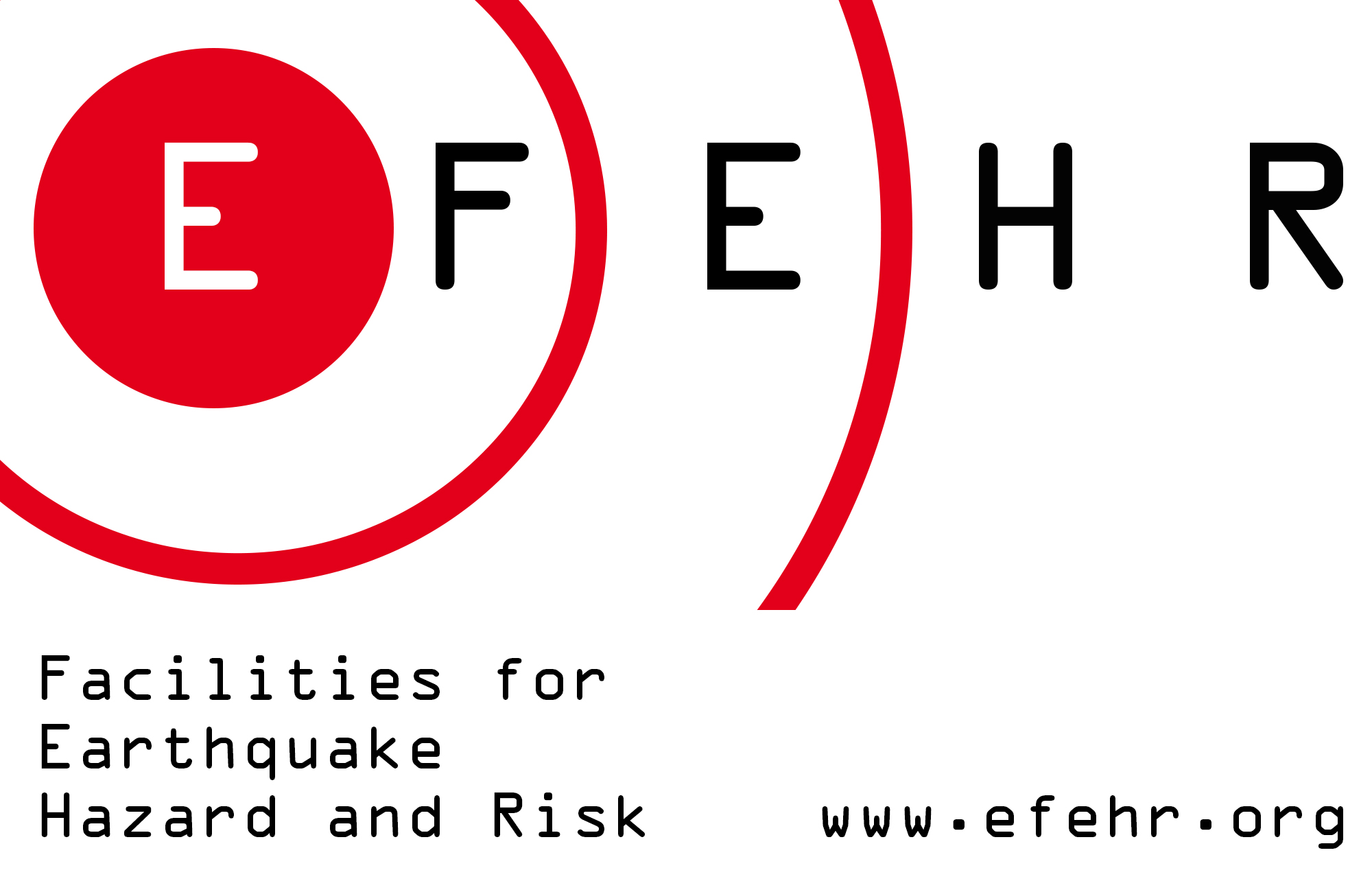
EFEHR is a non-profit network of organisations aiming at advancing earthquake hazard and risk assessment in the European-Mediterranean area. The mission of this newly established consortium is to maintain and further develop the 2020 European Seismic Hazard and Risk Models. Initiated during the Joint Research Activities of SERA Project, these models are entering in their final stage of development before their release in autumn 2020. The EFEHR consortium will coordinate efforts with the community to review and provide feedback before the release of the models within the next months. Would you like to stay updated on the progress of the 2020 European Seismic Hazard and Risk Models?
Subscribe here to the EFEHR newsletter and stay informed! The newsletter will offer updates on the forthcoming workshops, preliminary and final results. It will be distributed up to four times a year, so no spamming; all the important information will be summarised in one compact e-mail.
2020-03-16
Shake table tests of a special risk industrial facility at EUCENTRE Laboratory
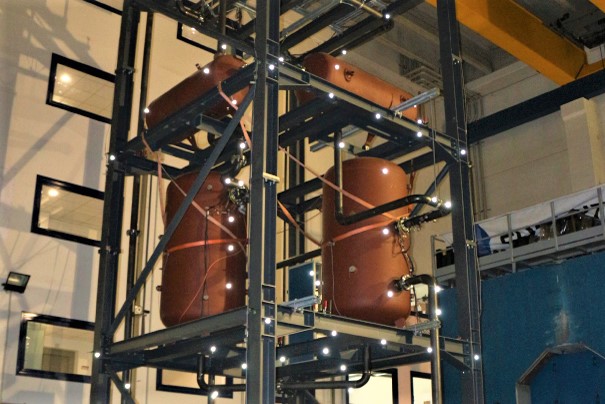
After about eight months of design, analysis and implementation, the SERA SPIF (Seismic Performance of multi-component systems in special risk Industrial Facilities) shake table experimental campaign is entering its main testing phases. The objective of the project is to holistically investigate the seismic behaviour of industrial plants equipped with complex process technology by means of shaking table tests.
The necessity exists, since past earthquakes have demonstrated different critical interactions affecting such plants, namely interactions between the supporting structure and plant components as well as between individual plant components. The structural or process-related interactions not only lead to production losses, but can also lead to serious secondary damages and pose a danger to humans and the environment in case hazardous substances are released due to leakages.
The structure is a three-storey steel moment frame with vertical and horizontal vessels, arranged on the three levels with some of them connected to each other by steel pipes. Furthermore, an electrical cabinet and a typical conveyor system are installed. The three levels are constructed with flexible diaphragm made of steel beams. The test structure is equipped with sensor systems integrated into the structure for rapid damage assessment and is applicable to condition analyses or early warning systems.
The achieved results on the seismic behaviour of multi-component systems with mutual interactions can be used for probabilistic safety analyses in power plants (e.g. nuclear power plants) as well as in industrial plants (e.g. chemical plants). In addition, important findings can be derived for the definition of performance limits, the isolation of structural systems and components as well as for the use of sensor systems for rapid damage assessment.
Visit SERA Transnational Access Web Portal for updates.
2019-12-04
SERA at the SEISMIX 2020 Symposium

The International Symposium on Deep Seismic Profiling of the Continents and their Margins (SEISMIX) is a biennial scientific meeting. Its next edition will take place in March 2020 in Perth, Australia. This symposium is the largest in its field and is focusing on control source and natural source imaging of the subsurface, from an exploration to a continental scale. It also addresses the latest technological and scientific developments in the application of seismic methods.
Researchers from the Institute of Earth Sciences Jaume Almera (ICTJA-CSIC) in Barcelona are presenting the latest and ongoing work related to SERA at the SEISMIX Symposium. The main aim is to disseminate the effort among the community and to stimulate discussions related to seismic data sharing and receiving input on new or desired services related to FAIR (findable, accessible, interoperable, and reusable) DSS (deep seismic sounding) data. Special focus will be devoted to the necessity of desired data products and services related to DSS, which could contribute to EPOS. In addition, the seismic database of ICTJA, in coordination with DIGITAL.CSIC (the digital repository of CSIC), will be presented as a prototype example of data management following the FAIR data principles.
The SEISMIX Symposium will be an outstanding opportunity to make the work carried out within the framework of SERA and EPOS more visible, to discuss cutting edge developments in seismic data management outside Europe, and to reinforce and promote new network collaborations.
2019-12-11
SlabSTRESS TA project at JRC ELSA Reaction Wall
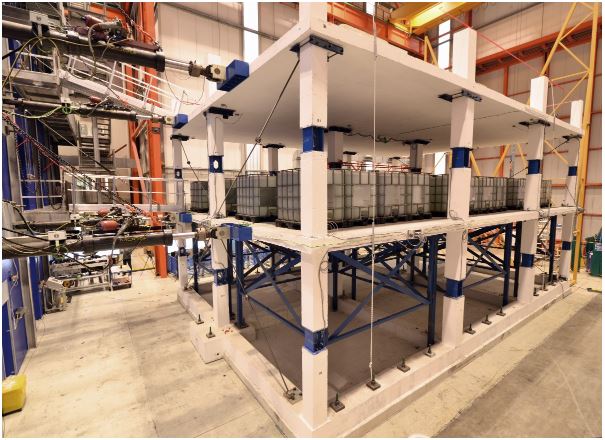
The SlabSTRESS Transnational Access project was successfully completed at the ELSA Reaction Wall. The team was comprised of 14 researchers from Politecnico di Milano (Italy), École polytechnique fédérale de Lausanne (Switzerland), Universitatea Tehnica de Constructii Bucuresti (Romania) and Universidade NOVA de Lisboa (Portugal).
The test specimen was a full-scale two-storey reinforced concrete flat-slab structure with plan dimensions 9x14 m. The testing programme included pseudodynamic tests (hybrid simulation of the physical specimen and numerical shear walls) with input corresponding to the Serviceability and Ultimate Limit States and quasi-static tests under imposed cyclic displacement with increasing amplitude (three slab-column joints were strengthened after the first cyclic test).
The project provided new knowledge on the response of flat-slab structures that could not be captured in previous tests on column-slab sub-assemblies. The results will help calibrate models, verify the Eurocode and Model Code models for punching shear, develop new rules for the deformation-based design and detailing of flat-slab structures subjected to earthquake and gravity loads, and improve the design of flat-slab frames as primary seismic structures.
19 research groups from 13 countries participate in the ongoing blind prediction competition.
Visit www.slabstress.org and follow them on ResearchGate for updates.
2019-11-28
Blind prediction test of a shaking table at LNEC
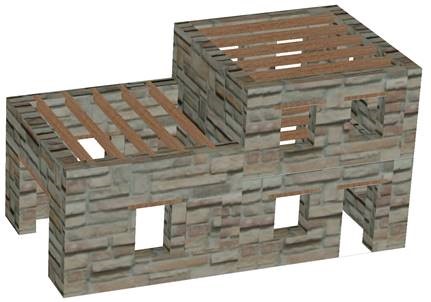
The SERA Transnational Access activities in Portugal, LNEC, are inviting scientists to participate in their blind prediction test of a shake table on two adjacent interacting masonry buildings. The buildings have been designed to provide more information on the seismic behaviour of historical building aggregates and will be subjected to a sequence of uni- and bi-directional tests. The test will be conducted at the shake table facility of LNEC and consists in a sequence of uni-directional and bi-directional tests.
The test is scheduled for January 2020. The deadline for submission of the blind prediction is December 20th 2019. Results obtained with any analysis method are welcome. A short description of the model and analysis technique is requested.
A webpage with all information on the test has been setup: http://sera-aims.com/ . All further information as well as questions already posed by participants can be checked there.
2019-10-30
Integration of data banks and access services from the earthquake engineering and seismology research infrastructures
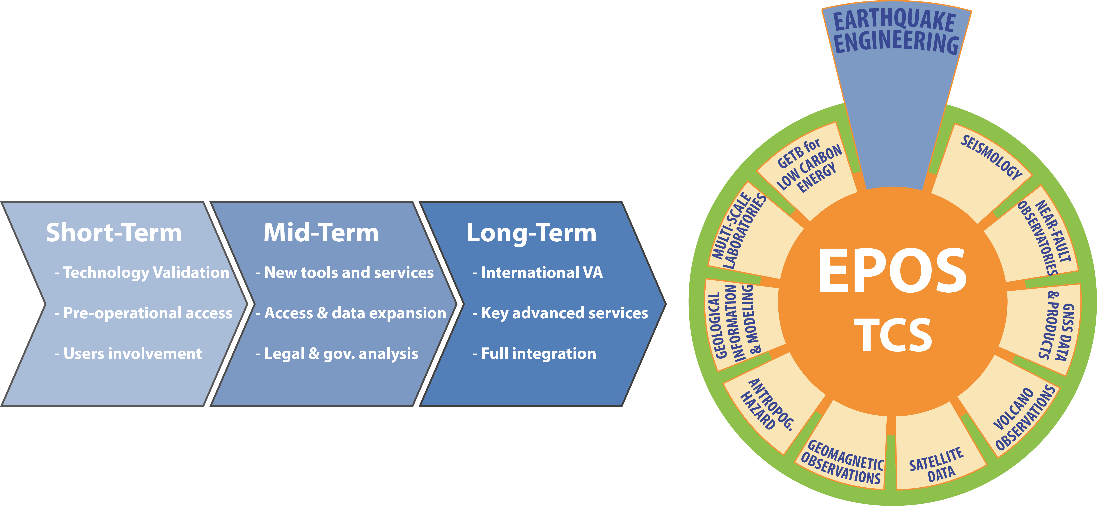
A number of European research projects in the fields of seismology and earthquake engineering have produced large amounts of data and related services with the goal of developing new approaches for seismic risk reduction. Nevertheless, the two adjacent scientific disciplines of earthquake engineering and seismology have not yet interfaced their data structures, lacking an interoperable data-sharing structure. A strategy for the integration of data banks and access services from the earthquake engineering (SERIES) and seismology (EPOS) research infrastructures was developed as part of the “Networking experimental seismic engineering databases (SERIES)” work package (WP6). The Joint Research Centre, University of Patras and University of Bergen are contributing to WP6.
The SERIES project represents the most significant effort in Europe towards the interoperability of earthquake engineering experimental data. The work conducted in SERIES enabled the automated integration of experimental results within a number of European laboratories and brought a source for experimental data so that the earthquake engineering community can access data from any SERIES partner by using a single, unified web interface. On the other hand, EPOS integrates the key research infrastructures in seismology, volcanology, geodesy, geology, geomagnetism, anthropogenic hazards and geoenergy applications. Each thematic community develops specific services that are validated and introduced in EPOS for sustainable operation.
The deliverable “D6.5 Roadmap for the integration of data banks and access services from the earthquake engineering (SERIES) and seismology (EPOS) research infrastructures” proposes the integration of the SERIES databases in the existing EPOS service as a new Thematic Core Service (TCS) and exploring possible interoperability with other TCSs (e.g. Seismology) and with international partners. The first step is to consider the SERIES database as the first service of a new Earthquake Engineering Thematic Core Service (E/ENG TCS) within the EPOS architecture. SERIES will initially provide, through EPOS, integrated access to key data and experimental measures produced at some of the best facilities for earthquake engineering worldwide. In its mature phase, the integration process will provide an advanced interoperability within the earthquake engineering community itself, with the sibling TCS seismology and other TCSs, and with international partners. This objective will be guaranteed by means of the implementation of new services and tools for improving user accessibility and experience.
The roadmap identifies the cross-discipline needs in earthquake engineering and seismology data assessed through a questionnaire directed to users and stakeholders operating in the two fields. The questionnaire collected information on requirements and use cases for earthquake engineering and seismological data serving as the basis for the developed roadmap. The metadata structures in EPOS and SERIES were compared, followed by a gap analysis and leading to the requirements for the metadata catalogues development for the proposed new E/ENG TCS. The final version of the roadmap was discussed with SERA and international partners during a dedicated workshop. The roadmap puts forward a strategy with different tasks envisaged to be performed in three steps (short-, mid- and long-term). In the short-term, by the end of the SERA project, a pre-operational access service will be provided to selected SERIES datasets in order to allow validation of identified access technologies and involvement of the user community, for further implementation in EPOS. The activities performed in the mid-term will include a review of how the newly developed services and products will be fully compatible with the requirements of EPOS, at the technical, legal, governance and financial levels. Full integration of the earthquake engineering TCS in EPOS will be achieved in the long-term perspective by providing also access to research infrastructures, laboratories and data centres established outside Europe, thus improving the international dimension of EPOS.
2018-09-17
Registration opened for 2018 ORFEUS Annual Observatory Meeting and Workshop

The ORFEUS Annual Meeting 2018 on 12 – 14 November 2018 will be held in Athens, Greece, and is hosted by the National Observatory of Athens. The workshop focuses on Strong-Motion Seismology and Engineering Seismology. The workshop will comprise oral and poster presentations. The oral program will include only solicited talks in all thematic areas.
The detailed program will be made available on the official workshop website where you can also register to be part of this workshop. The workshop includes an optional guided visit to the Acropolis and its strong-motion monitoring array on November 14 in the morning.
2019-05-16
Successful Second SERA Annual Science Meeting
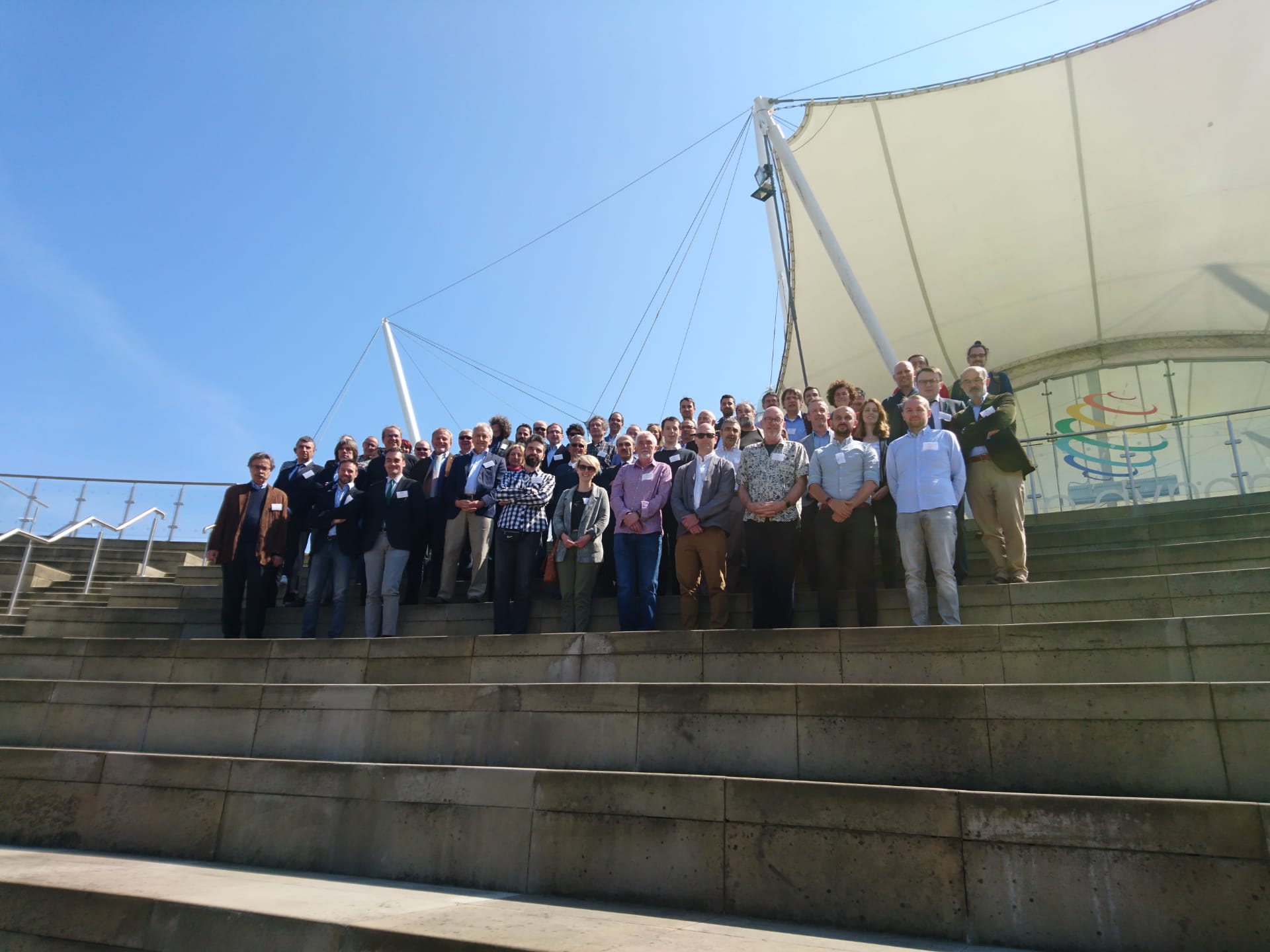
From 15 to 16 May 2019, over 50 members of the SERA community have met for the Second Annual Science Meeting in Edinburgh, United Kingdom. It was hosted by the British Geological Service BGS. Many interesting presentations were held, each work package and task giving a brief summary of its status quo and future plans. Fruitful discussions arose and many challenges could be adressed during these two days. To also further promote networking, one of SERA’s main objectives in the scientific community, the organisation team planned a social dinner on Wednesday night where the discussion could be continued over a delicious meal. The Science Meeting provided an excellent opportunity to strengthen international collaboration and to share all of the different participants contributions.
2019-04-17
Trainee vacancy at JRC
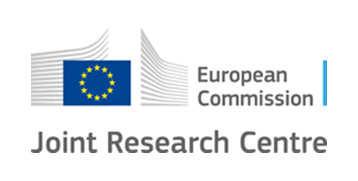
A trainee position on the experimental study of flat-slab structures is available at the Joint Research Centre. The training consists in the collaboration to the elaboration of experimental data from the SERA/SLABSTRESS Transnational Access project. The deadline for applications is 14/05/2019. For more information and to apply, please visit this site (code: 2019-IPR-E-000-011551).
2019-03-21
SERA+ proposal submitted

SERA+ responds to the call INFRAIA-01-2018-2019 Research Infrastructures for Earthquake Hazard with the overall objective to improve the provision of access to data, services and research infrastructures for earthquake hazard, and deliver solutions based on innovative R&D in seismology and earthquake engineering, aiming at reducing the exposure of our society to the risk posed by natural and anthropogenic earthquakes. To this end, SERA+ pursues several goals:
- offer transnational access to the best European experimental facilities in earthquake engineering and to key laboratories in the US, China and Korea
- offer virtual access to the main providers of seismological data and products, in Europe and the US
- integrate the successful results and implementation of the past infrastructure projects NERIES, NERA, SERIES and SERA and expand access capabilities to new communities and disciplines which were not yet focus of integration in past projects
- achieve the effective integration of key competences, data and infrastructures in seismology and earthquake engineering, through common Networking and Joint Research Activities
- provide authoritative input for diverse stakeholders, from Civil Protection agencies to the European seismic building code EC8
- develop the future standards and techniques for experimental observations in earthquake engineering and observational seismology
- consolidate the construction and validation of EPOS, by developing and testing key services in seismology, anthropogenic hazards and earthquake engineering
- provide effective communication and outreach to all stakeholders.
With 41 beneficiaries from 19 countries, 32 activities and 128 deliverables, SERA+ builds an important element toward the reduction of seismic risk in Europe.
2019-02-05
SERA European Seismic Risk Model Workshop

One of the Joint Research Activities of the Horizon 2020-funded project SERA is entitled a 'Risk modelling framework for Europe'. As part of these research activities, a seismic risk model for Europe is being developed and will be presented for the first time at this workshop. The main aim of the workshop will be to obtain feedback on the model, such that it can be updated and released in April 2020.
The SERA European Seismic Risk Model Workshop which will take place from 12th - 13th September 2019 at Boğaziçi University, Istanbul, Turkey and aims to bring together experts from academia and industry (i.e. insurance, reinsurance, disaster risk, cat modelling, engineering) across Europe in order to cover a wide range of stakeholders and use cases for the seismic risk model. Every contribution to this event is highly appreciated.
If you are interested in attending the workshop, please register through the website that has been set up for the workshop and contact Helen Crowley.
Registration will be open until the capacity of the workshop is reached; afterwards, interested particpants will be added to a waiting list.
2018-11-07
Successful EPOS-ERIC Launch Ceremony
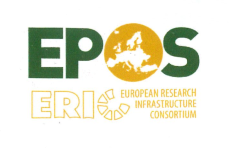
Running in parallel, SERA and EPOS-IP offer numerous opportunities to benefit from each other, especially regarding advancements in the data and products offered in EPOS through virtual and physical access.
As the first EU-level intergovernmental organisation for solid earth sciences, EPOS was granted the status "European Research Infrastructure Consortium (ERIC)".
This was officially celebrated with a launch ceremony on 7 November 2018 at the Headquarter of the Italian Ministry of Education, University and Research (MIUR) in Rome (Italy) in the presence of the Vice-Minister for Education, University and Research Lorenzo Fioramonti, the Director General for Research and Innovation of the European Commission Jean-Eric Paquet, the President of the INGV Carlo Doglioni.
The EPOS Coordinator Massimo Cocco has described the EPOS infrastructure and highlighted the importance of sharing scientific data and products and developing services to facilitate open access and use of scientific data.
2019-10-02
Blind prediction contest on 3d rocking structures
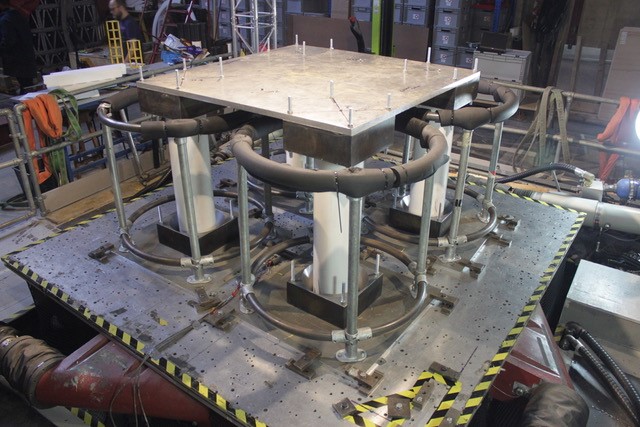
IBK at ETH Zurich, EQUALS lab at the University of Bristol and the PEER Center at the University of California at Berkeley are organizing a contest to predict the maximum bi-directional seismic response of a four-column rocking podium structure excited by artificially generated ground motions applied by a shaking table. For more information, please visit this site.
2019-09-18
Blind prediction contest on flat-slab structures
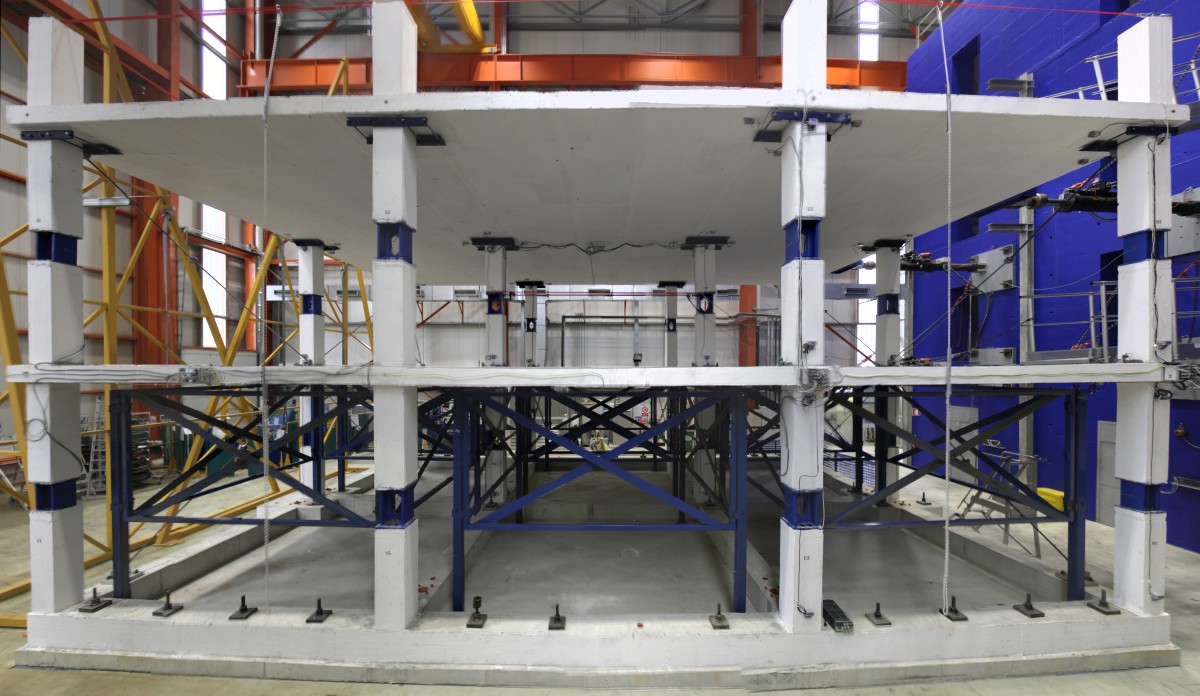
JRC at ELSA is launching a blind prediction contest on the SERA/SlabSTRESS TA project. Participants are asked to predict the experimental response of the real-scale SERA/SlabSTRESS flat-slab specimen under seismic and cyclic loads. For more information, please visit this site.
2019-07-10
Open position as Scientific / Technical Project Officer at JRC

A position as Scientific / Technical project Officer opened up in the Directorate for Space, Security and Migration (located in Ispra, Italy). The job proposed is in the Safety and Security of Buildings Unit within a team of experimentalists and numerical modellers who provides reference results relevant to the European standardisation in the building and construction sectors. The selected candidate will work for the pilot project 'Integrated techniques for the seismic strengthening and energy efficiency of existing buildings'. Find more information here.
2019-04-25
First European Exposure Model released

A first version of the European Exposure Model, developed as part of the "Risk Modelling Framework for Europe" workpackage (WP26), has been released on EFEHR’s European Seismic Risk Service portal. This exposure model has been used in the development of the Global Earthquake Model’s (GEM) Global Seismic Risk Map, released in December 2018. Improvements to the European exposure model are ongoing within SERA, together with developments in physical vulnerability and site amplification modelling, all of which will be integrated within the European Seismic Risk Model 2020 (ESRM20). A preliminary version of this risk model will be presented to over 100 participants from both academia and industry at a workshop in Istanbul in September 2019.
2019-04-09
How to rapidly detect and locate felt earthquakes
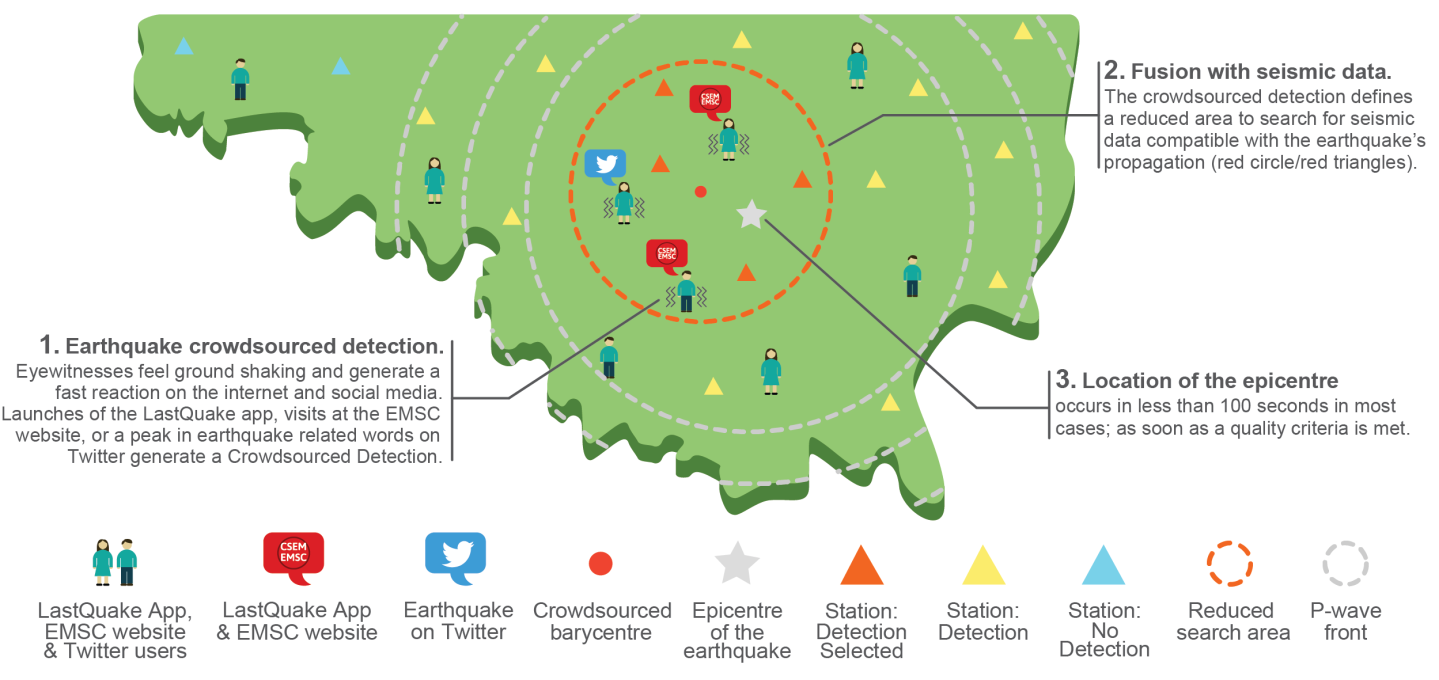
Two papers related to JRA6 have been recently published on how to rapidly detect and seismically locate felt earthquakes. The first one, published in Seismological Research Letters, presents detections based on LastQuake smartphone app launches, a method named App Earthquake Detection (AED). Eyewitnesses are shown to launch LastQuake rapidly after feeling the tremor leading to automatic detection as fast as 20s regardless seismic data.
This is the latest “crowdsourced earthquake detection” method in operation at EMSC (European Mediterranean Seismological Centre) and complements detections based on EMSC website traffic monitoring and Twitter Earthquake detection (TED) based on the number of published tweets (messages on Twitter) containing the keyword “earthquake” in various languages. Compared to the 2 other methods, AED is often faster and presenting the best geographical information.
The second article, published in Science Advances in collaboration with GFZ (Germany) and Istvan Bondar (Kövesligethy Radó Seismological Observatory, Hungary), combines crowdsourced earthquake detections with seismic data from the GEOFON global networks to produce faster and reliable seismic locations. In the best cases, when the station coverage is adequate and EMSC is well identified in the region, seismic locations can be obtained in less than one minute of the origin time. It is a cheap way to improve earthquake network time performance at little cost for those felt earthquakes where public desire for information is high.
2019-03-12
Shake-table dynamic tests on a steel silo filled with wheat: SEismic Response of Actual steel SILOS (SERA-SILOS)
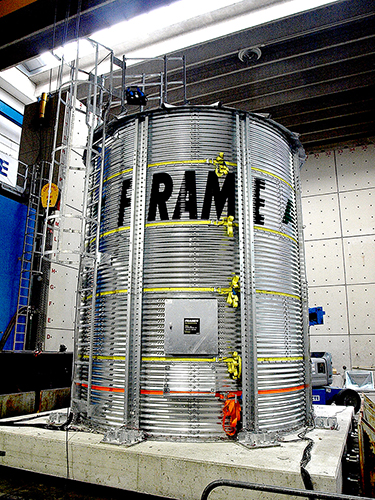
Since February 25th, at the Eucentre Foundation ShakeLab, shake-table dynamic tests are being carried out on a full scale steel silo (supplied by AGI Frame) filled with wheat.
The tests are performed on the mono-axial shake-table (7m x 5.6m) in order to evaluate the silo behaviour subjected to seismic actions both in fixed and base isolated configuration.
The experimentation is part of the Transnational Access framework of the SERA project.
2018-12-03
Strong motion site characterization Workshop
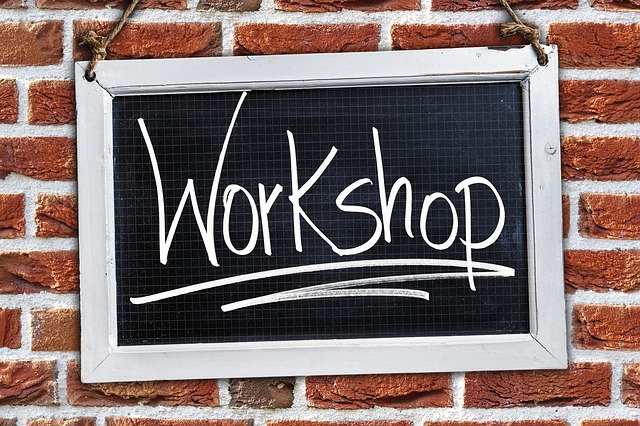
Within the framework of NA5 "Networking databases of site and station characterization" of the SERA-EU project (see SERA-NA5 description for further details). It is devoted to the proposition of guidelines and recommendations for common best practice procedures of site-effects characterization at the seismic strong motion stations, in terms of indicators and quality metrics. Moreover, it will discuss the road map for strong motion site characterization in Europe in the next 10 years. All topics are related to the SERA and EPOS activities on connecting infrastructures and communities in the field of site characterization.
Scientists and practitioners in geophysics, engineering seismology and geotechnical engineering, building code experts as well as network operators are welcome to discuss on the state of the art of site characterization at seismic stations worldwide and on the guideline propositions. Find more ifnormation here.
Additionally, a training course on Ambient Vibration Techniques for Site Characterization and an open workshop on recent advanced techniques for site characterization are proposed. Find further details here.
2018-09-10
3rd TA Call for Proposals

SERA’s transnational access (TA) activities offer access to Europe’s largest collection of high-class experimental facilities for earthquake engineering. Until 31 October 2018, new proposals can be submitted. Eligible user groups should feature a majority of its users working in EU member countries or associated countries. Access for other user groups is limited to 20% of the total amount of access units.
A total of 12 possible projects will be allocated during this third call. The TA projects will have to be conducted during the SERA project lifetime. For further information on how to register, what documents need to be handed in and which facilities still are available for new projects, please refer to the TA website.
2018-10-15
SERA Questionnaires

Within the activities of Task 6.2, two questionnaires to collect feedback for the roadmap for integration of earthquake engineering and seismological data were created. The questionnaires are available at the following links:
SERA Survey RUCs: This questionnaire is addressed to general users of data and aims to collect information on requirements and use cases
SERA Survey TCSEngineering: This questionnaire is addressed to earthquake engineering experimental facilities and aims to collect detailed technical information on data, data products, software and services.
Questionnaires can be filled in until 31 October 2018
2018-06-11
First fact sheet series available
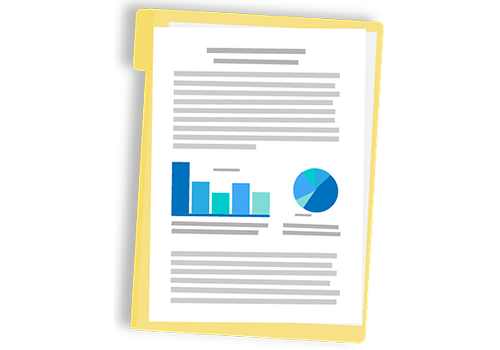
- Why is it important to know the seismic hazard of a certain region?
- What is seismic risk?
- What happens to buildings in case of an earthquake?
- How does the testing of a building on a shake table works?
2018-05-02
Annual scientific meeting in Bucharest
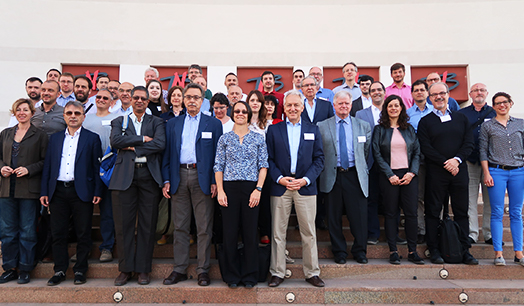
From 25 to 26 April 2018, the SERA community met for its first scientific annual meeting in Bucharest. Around 70 project participants took part and presented the status-quo, results and upcoming work for their tasks and work packages. Following the contributions of all SERA participants, the SERA Scientific Advisory Board described its impressions of the tasks accomplished in the first twelve months of the project.
Based on those, its members will elaborate a set of recommendations for the attention of the general assembly. In addition, the SERA management board held its third meeting to discuss amongst others, details of the data management plan or measures to ensure a successful outcome of transnational access experiments. Framing the main meeting, numerous work packages took the opportunity to get together in smaller groups and to deepen the discussions on specific topics.
Of course, there was also time allocated for informal exchange: Be it at the social dinner in the old town of Bucharest, or during the tour to INFP, which the local SERA team offered.
You find more pictures here.
Click here to have look at the detailed agenda.
2018-04-04
Data and services for engineering seismology portal online
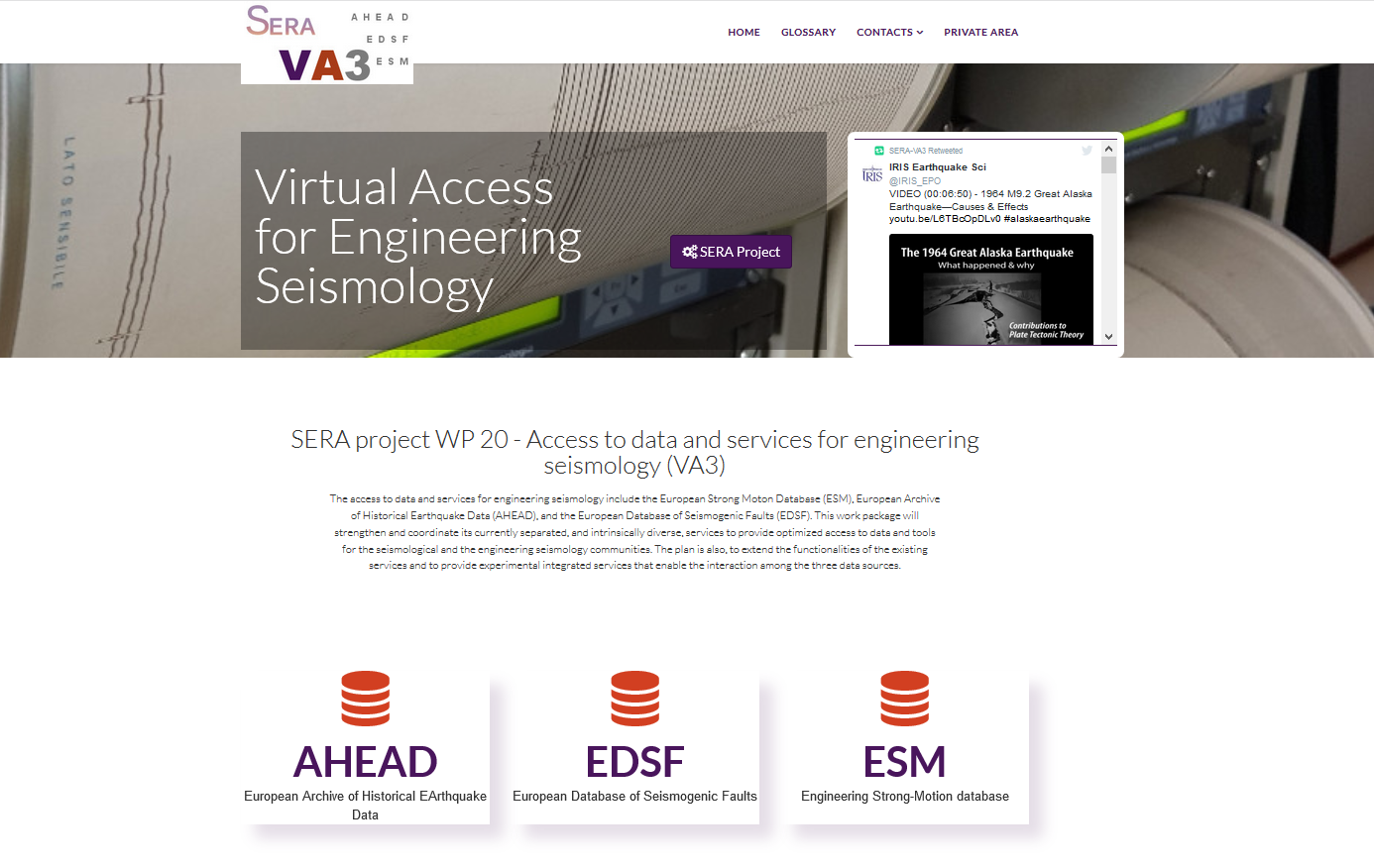
The SERA WP20/VA3 has recently outlined a web portal to access data and services for engineering seismology. It facilitates the access to the European Strong Motion Database (ESM), the European Archive of Historical Earthquake Data (AHEAD), and the European Database of Seismogenic Faults (EDSF). The portal's aim is to coordinate the currently separated and intrinsically diverse services. In future, it is planned to extend the functionalities of the existing services and provide interactions among the three data sources.
2018-05-30
Successful tests at STRULAB reaction wall
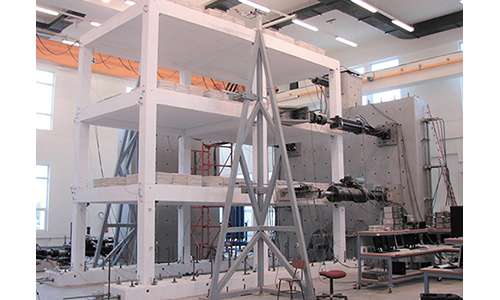
An international project team composed of scientists from Cyprus University of Technology, Ecole Centrale de Nantes and DENCO Structural Engineering carried out experiments at the STRULAB reaction wall at the University of Patras – one of the ten research facilities SERA is facilitating access to. The scope of the project called ARISTA (Seismic Assessment of ReInforced Concrete frames with SmooTh bArs) was to study the seismic behaviour of a 1:1.5 scaled three-storey two-bay reinforced concrete frame with smooth bar reinforcement. According to the project members, the results will provide invaluable information for design guidelines and code rules.
The first tests consisted of a cyclic loading-unloading-loading history. The top story have undergone a displacement of ± 50 mm during a cyclic loading-unloading-loading history and a final unloading cycle to zero force. The maximum damage occurred at the first story in the form of shear cracks. The relation between the story shear force and interstory drifts are shown here. The columns in the first story cracked at a shear force of approximately 100kN. Due to yielding of the reinforcement, a small residual drift after the final unloading remained.
The ARISTA-project leaders already plan a second test series. Subsequently, the results will help to calibrate numerical mathematical models for the flexural and shear capacity of substandard RC frames with smooth bar reinforcement.
For project and contact details, please click here.
2018-04-19
TA projects selected within second call
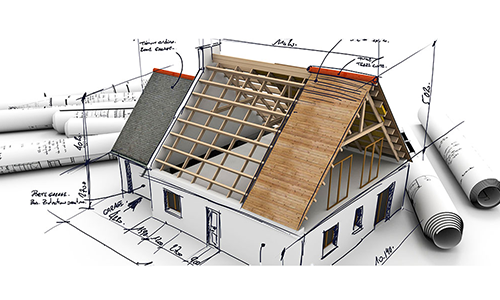
After the second call for proposals within the SERA transnational access framework, the TA Selection and Evaluation panel selected sixteen promising projects. This leads to a total of 33 projects from the beginning of SERA until today. The list of the approved projects is available here. The dates for the third call are not yet set, but we will keep you informed.
2018-03-09
Join the "earthquake early warning" voices in Malta!

The 36th General Assembly of the European Seismological Commission will take place in Valetta (Malta) from 2 to 7 September 2018. SERA participants Aldo Zollo, John Clinton, Stefano Parolai and Matteo Picozzi will be convenor of session S18 - towards a faster and more accurate assessment of the impact of an earthquake - which is related to the topics investigated by SERA. The aim of the session is to provide a state-of-the-art overview in the field of earthquake early warning and rapid response systems.
In particular, they intend to create a forum to share experiences, techniques, perspectives, to identify areas for improvements, and to move towards an international agreement on standards, instrumentation, and methods for new real-time seismic risk mitigation systems.
For questions regarding the SERA related session, do not hesitate to contact Matteo Picozzi (matteo.picozzi@unina.it). For general information about the event, visit the organizer's website. It would be a pleasure to meeting many of you there!
2018-01-22
Visit to Grimsel rock laboratory
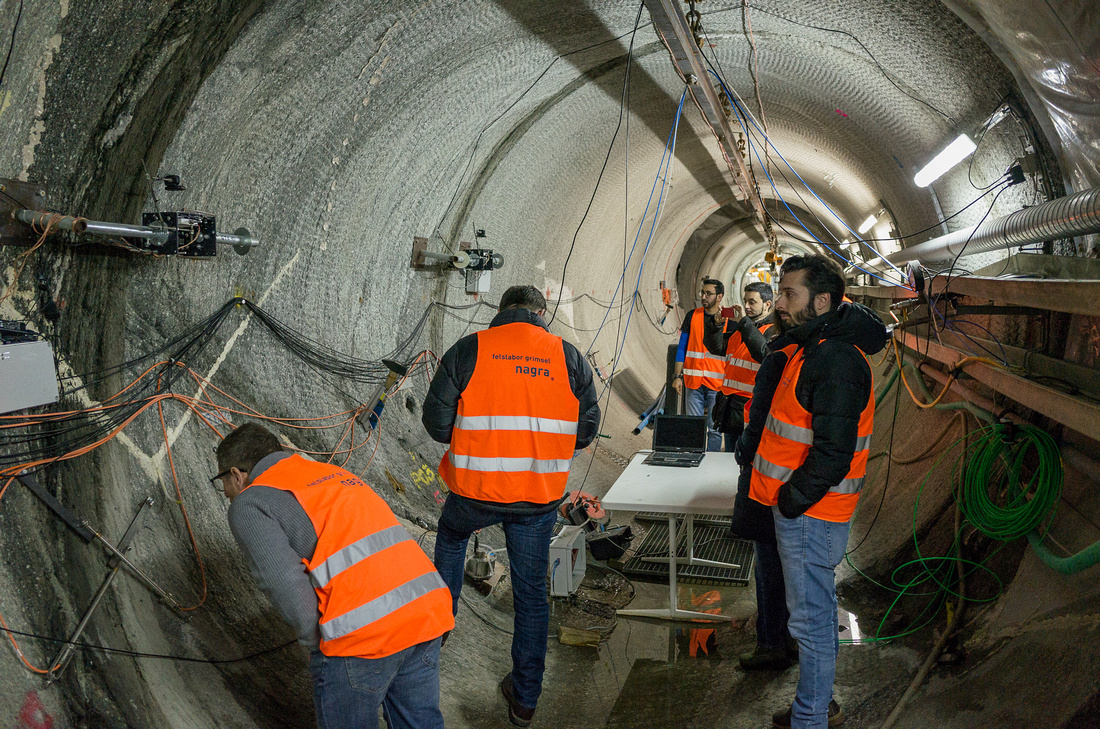
During the meeting of SERA work package WP23/JRA1 on 18 and 19 January, ten people from Germany, Switzerland, France, Italy and Poland gathered in the snowy Swiss mountains. On the first day, they visited the Grimsel rock laboratory, which is located 1730 metres above sea-level in the granitic formations of the Aar Massif 450 metres deep in the rock. The JRA1 group eyed especially on the "in-situ stimulation and circulation (ISC)" experiment since its dataset could be used as one of the validation cases for the JRA1 work package.
The afternoon and the following day was filled with discussion and presentation, for example on the current status of the JRA1 work package as well as on the newly developed Platform for the Research into Anthropogenic Seismicity and other Anthropogenic Hazards. The next JRA1 meeting will take place in Bucharest during the SERA annual meeting.
2017-11-06
Teachers' workshop in Bucharest
The teachers workshop in Bucharest focused on demonstrating how seismology and seismic engineering can provide tools and examples for educational activities. It included presentations, hands-on activities, round table discussions and thematic visits at research facilities. More than 200 teachers mainly from Romania but also from Moldavia and Ukraine took part in the 3-day event.
2017-07-19
SERA and EPOS: a perfect match
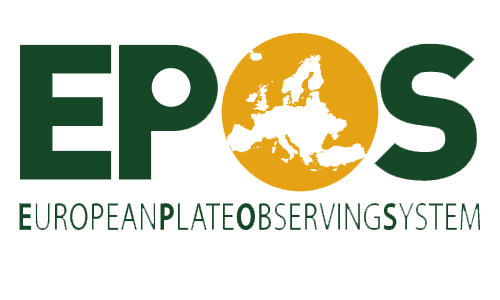
Running in parallel, SERA and EPOS-IP will offer numerous opportunities to benefit from each other, especially regarding advancements in the data and products offered in EPOS through virtual and physical access.
2018-01-10
"Scientific value and innovation were the most important selection criteria"
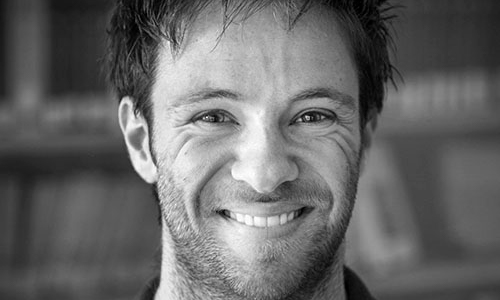
Suited to the launch of the second call for proposals for transnational access projects, Igor Lanese, inolved in the TA coordination, talks about how he and his colleagues of the TA evalution panel selected the most promising projects during the first round. And he also summarizes the expected contribution of the projects to the seismology and earthquake enginnering community.
Which were the three main criteria for the selection?
Scientific value and innovation of the proposals were the most important selection criteria, together with the importance for European competitiveness. Besides, technical and economical compatibility with the selected research infrastructure's available resources were critical aspects for the decision.
Where are the selected research teams from?
Overall, the involved researchers come from 18 different nations. The most represented are Italy, Switzerland and Portugal (see details graphics).
When will the experiments start?
The first access to NORSAR data centre has already been provided. For all other research infrastructures, the preliminary phase which includes the specimen and test setup design, material supply, specimen construction, instrumentation layout design, etc. is currently implemented. This phase generally requires few months, therefore, the first tests should start between March and June 2018.
What is the overarching goal of the experiments?
The accepted projects cover a wide range of key aspects related to structural safety. The research will encompass geotechnical aspects with soil-structure interaction and liquefaction, existing structures with limited seismic design provisions as well as innovative structural systems, with focus both at component (e.g. steel connections, coupling beams) and whole structure level, to enhanced seismic isolation and retrofit solutions. Further, the experiments aim at implementing innovative testing techniques such as geographically-distributed hybrid simulation for seismic and fire testing.
What contributions you expect for the seismology and earthquake engineering community?
Given the heterogeneity of the selected projects and the research infrastructures peculiarities, we expect a wide range of contributions to the earthquake engineering and engineering seismology scientific community: The research will improve the knowledge and the safety of new, existing and retrofitted structures, through the investigation of specific structural aspects (e.g. components of shear resistance of coupling beams, soil-structure interaction) as well as the global response to different kind of actions (seismic, fire). The role of non-structural elements gained more and more importance in the last years, and it will be duly considered in the research. Furthermore, EE and ES communities will profit from the revision and improvements of Eurocodes, design guidelines and novel design methods based on the experimental campaigns results. Novel testing techniques will be implemented and validated, giving access to the scientific community to new powerful and cost-effective tools for structural assessment. Finally, all TA users will significantly benefit from the collaboration with highly-specialized first-class research infrastructures, bringing new skills and knowledge to their own institutions and to the whole scientific community through conferences, workshops, and so on.
2018-01-09
Second call for TA proposals open
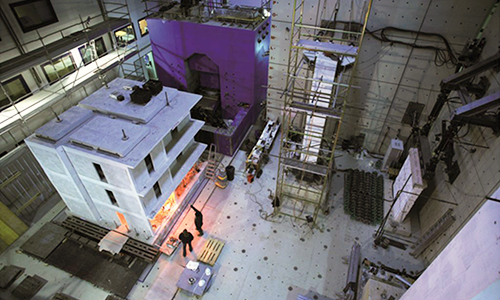
SERA's transnational access (TA) activities offer a combined and integrated access to the largest collection of high-class experimental facilities for earthquake engineering in Europe. During the first call for TA projects, the SERA TA evaluation panel selected 17 promising research projects and granted them with access to the facilities. This week, the second round to apply for access has started. Interested researchers must submit their proposal until 4 March 2018 including project details, scientific bases, foreseen advances and target schedule. For detailed information, please visit sera-ta.eucentre.it or download this pdf.
2017-10-05
First TA projects selected
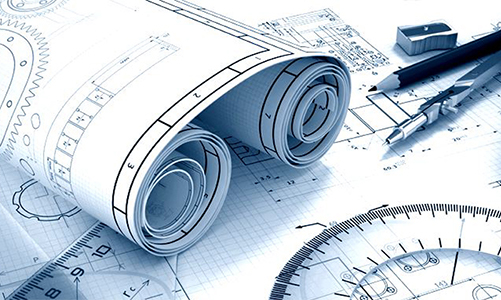
An important part of SERA is to offer transnational access to ten high-class European experimental facilities for earthquake engineering, integrated studies on geotechnical site effects and engineering seismology, and array seismology. Access is provided to the most talented research teams. The TA-SEP (Transnational selection and evaluation panel) selected 17 research projects within the first call for proposal. Here you find the list of the selected proposals.
2017-05-31
SERA kick-off meeting
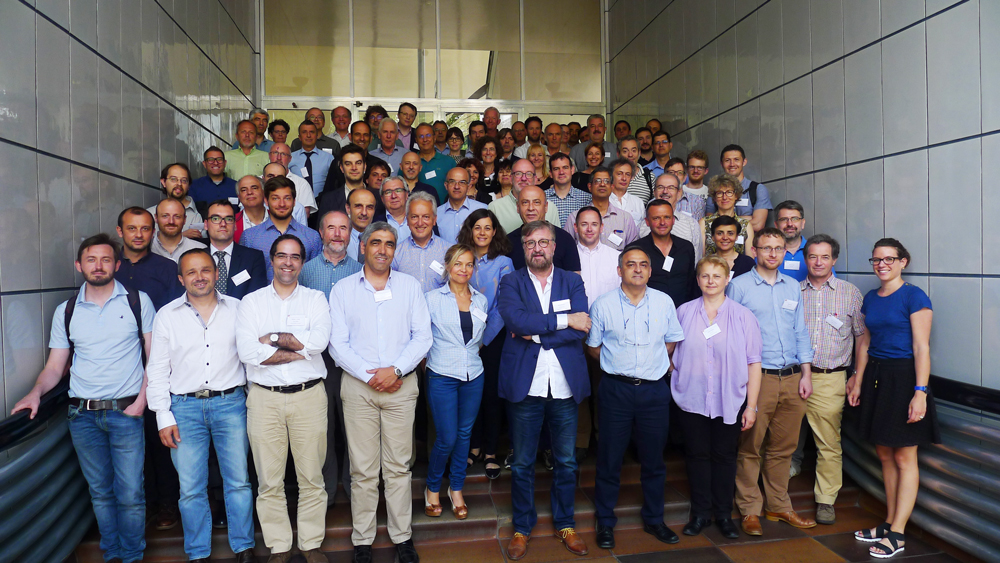
The SERA kick-off meeting took place from 31 May to 1 June 2017 at ETH Zurich. The aim of the meeting was that the project participants get an insight to all work packages and understand the big picture of SERA. During the social dinner on lake Zurich the participants could get to know each other on a personal level - an important aspect to make future cooperation successful.
